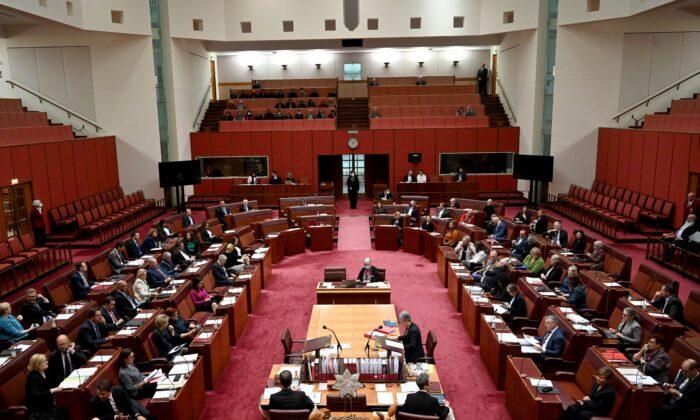The Australian parliament has passed a $10 billion (US$6.43 billion) housing fund legislation, paving the way for the Labor government to embark on its ambitious housing reform agenda.
After months of back-and-forth negotiations with the Australian Green Party and crossbench senators, the Labor government has secured enough votes to pass its Housing Australia Future Fund bill on Sept. 14.
However, Labor has had to revise several bill provisions to gain the Greens’ support.
A minimum of $500 million from the fund’s returns will be spent on housing each year under a deal with the Greens, which is a step up from a maximum of $500 million previously.
The fund will also set aside $200 million to repair, maintain and improve housing in remote Indigenous communities, $100 million to provide housing for women and children impacted by family and domestic violence, and $30 million to build housing for veterans experiencing homelessness.
Labor managed to get the support of minor parties and crossbenchers by investing an additional $1 billion in a housing program on top of a $2 billion investment previously announced for social and affordable housing supply.
With the newly approved housing fund, the Labor government hopes to build 30,000 social and affordable homes over the next five years.
Prime Minister Anthony Albanese touted the bill’s passing as a big victory for vulnerable Australians.
“Today is a win for boosting housing supply ... for improving housing affordability across the nation,” he told the parliament.
“Today, we have brought together the crossbench to pass the biggest investment in social and affordable housing in more than a decade.”

Concerns About the Legislation
While the Labor government has sung praise over the passing of the legislation, the Coalition was sceptical about whether the fund could deliver what the government had promised.“It’s not even a drop in the bucket. I mean, this is 6,000 homes a year over five years. At the same time, this government is bringing in 1.5 million new migrants,” Shadow Housing Minister Michael Sukkar said.
“I fear that we won’t see anywhere near these 30,000 homes ... and even that is inadequate.”
The Coalition has been opposing the legislation, saying the fund will cause more inflation while not necessarily delivering investments to where they are needed.
Peter Tulip, the chief economist at the Centre for Independent Studies, also agreed with Mr. Sukkar.
Mr. Tulip pointed out that 30,000 homes just increased the national dwelling stock by around 0.3 percent and would not create much impact on the housing market.
“If we assume that the rent on these new dwellings is about a third less expensive than average market rents, then the direct effect of these dwellings is to reduce average rents paid by all renters by 0.1 percent,” he told The Epoch Times.
“In total, the sum of direct and indirect effects is to reduce the average cost of housing by about 0.8 percent. That is tiny, though it’s better than nothing.”
The chief economist believed the best way to have more affordable housing in Australia was to increase the supply via relaxing zoning restrictions to allow more buildings.
“In contrast to today’s announcement, this would improve affordability without costing the taxpayer a cent,” he said.
Meanwhile, Liberal frontbencher Anne Ruston criticised Labor’s negotiations with the Greens, saying they caused the fund’s cost to exceed the $10 billion promised at the election.
Greens Will Continue to Push for A Rent Freeze
Despite striking a deal with Labor, the Greens failed to push through a rent freeze and cap.The prime minister previously rejected the Greens’ demand, stating that it was a state and territory issue and not within the scope of the federal government.
However, Greens national leader Adam Bandt said his party would continue to fight for the policy as more housing legislation would be introduced to the parliament.
“At some point, the penny has to drop with the government that renters need some breathing space. They need a rent freeze to allow incomes to catch up with the soaring rents,” he said.







